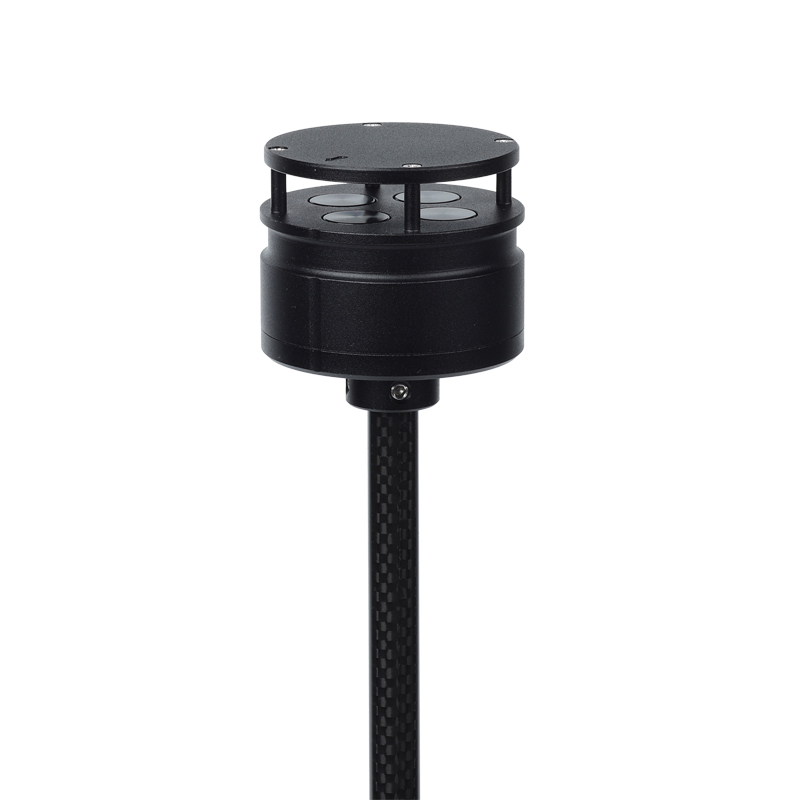Tianyi Sensor IOT Technology Co., Ltd
Sales Manager:Ms. Emily Wang
Cel,Whatsapp,Wechat:+86 15898932201
Email:info@fengtutec.com
Add:No. 155 Optoelectronic Industry Accelerator, Gaoxin District, Weifang, Shandong, China

Sales Manager:Ms. Emily Wang
Cel,Whatsapp,Wechat:+86 15898932201
Email:info@fengtutec.com
Add:No. 155 Optoelectronic Industry Accelerator, Gaoxin District, Weifang, Shandong, China

Model:FT-F1
Brand:tianyi
Product Name: Anemometer for drones
Anemometer for drones is a compact ultrasonic anemometer that can be carried by drones and can accurately measure wind speed and direction.
Product Introduction: F1 Anemometer for drones is a wind speed and direction meter that utilizes the principle of ultrasonic resonance.
It is specially designed to be installed on small aircraft and on unmanned platforms to monitor wind speed and direction values in low-altitude areas.
The weight of F1 is 56g, the diameter is 46mm, the size is small and the weight is light. It has a compact and solid appearance, and has extremely strong anti-electromagnetic interference, waterproof and dustproof functions. It can work normally at an altitude of 4,000 meters and the external environment between -40°C and +70°C.
It uses low-power chips internally, and can measure wind up to 60m/s, especially for unmanned aircraft and related flight control platforms, as well as environmental monitoring systems using aircraft.
F1 has two installation methods, which can be mounted on the top of the aircraft and can be mounted upside down on the bottom of the aircraft.
Anemometer for drones technical indicators:
Wind speed measurement range 0-60m/s, accuracy 3%, resolution 0.1m/s
Wind direction measurement range 0-359°, accuracy ±3°, resolution 1°
Instrument diameter 46mm
Instrument height 48mm
Instrument weight 56g
Material ABS
Color black
Digital output RS485
Baud rate 4800-19200
Communication protocol ModBus, ASCII
Operating temperature/humidity -40℃-+70℃; 0-100%
Working altitude 0-4000 meters
Power supply requirements VDC: 5-30V; 15mA (12V)
Installation method: Top column installation or bottom lifting of aircraft
In the fields of meteorology, environmental monitoring, agriculture, hydrology, transportation, and wind power generation, obtaining high-precision, high-time-resolution meteorological data for small-scale (microscale) areas is crucial. Traditional meteorological observation stations are usually lar...
In underground coal mine operations, ensuring the safety of personnel and the smooth progress of work is of great significance. The industrial product, the Toxic gas detector, as a safety detection device, shoulders the important responsibility of safeguarding the safety of the mine. It can accurate...
In winter, there is frequent rain and snow, and road icing seriously affects the safety of pedestrians and vehicles. To address this issue, our company has launched the Road Ice Sensor. By adopting microwave electrical signal detection technology and equipped with a temperature compensation function...
People have been measuring the wind for a long time, and the tools for wind measurement have been constantly upgraded. In the 15th century, Leonardo da Vinci designed a vane anemometer, marking the beginning of the era of scientific wind measurement. In 1846, Thomas Romney Robinson, a British naval...